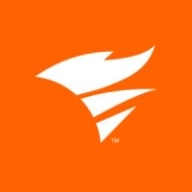

LogicMonitor and SolarWinds AppOptics compete in the IT performance monitoring category. LogicMonitor seems to have the upper hand due to its more comprehensive feature set and versatility.
Features: LogicMonitor offers fast, interactive dashboards, customizable data sources, and granular alert tuning, enhancing its adaptability. SolarWinds AppOptics focuses on efficient performance monitoring, with a strong emphasis on application management and real-time insights.
Room for Improvement: LogicMonitor needs improvements in alert integration, logical service grouping, and ease of customizing data sources. SolarWinds AppOptics could improve by offering a more centralized platform, integrating separate applications, and enhancing pricing models.
Ease of Deployment and Customer Service: LogicMonitor provides versatile deployment options across public, on-premises, and hybrid clouds with excellent customer service. SolarWinds AppOptics supports on-premises and public clouds with solid support but lacks flexibility.
Pricing and ROI: LogicMonitor provides substantial features that justify its premium cost, leading to clear ROI and a flexible licensing model. SolarWinds AppOptics has a comparable pricing structure but may not offer the same level of savings or feature consolidation.
| Product | Market Share (%) |
|---|---|
| LogicMonitor | 0.8% |
| SolarWinds AppOptics | 0.4% |
| Other | 98.8% |


| Company Size | Count |
|---|---|
| Small Business | 10 |
| Midsize Enterprise | 9 |
| Large Enterprise | 8 |
| Company Size | Count |
|---|---|
| Small Business | 2 |
| Midsize Enterprise | 1 |
| Large Enterprise | 7 |
LogicMonitor offers flexible IT monitoring with customizable dashboards and robust alerting capabilities. It integrates seamlessly with third-party apps like ServiceNow and provides a single-pane view for diverse IT environments, aiding in proactive issue resolution and enhancing operational efficiency.
LogicMonitor stands out with its capability to monitor diverse infrastructures including Cisco Voice systems, data centers, and virtual environments. Supporting servers, storage, networking devices, and applications, it provides seamless integration with cloud services like AWS and Azure. Users leverage its scalability and flexibility, benefiting from dynamic thresholds, anomaly detection, and detailed visualization. All these features contribute to improved management of IT assets and streamlined operations. Users suggest improvements in mapping, reporting, and automation for remediation, desiring more customizations and an expansive application performance monitoring toolset.
What are LogicMonitor's key features?LogicMonitor is widely implemented across industries, providing monitoring for infrastructure in sectors like telecommunications, cloud computing, and managed services. Managed service providers particularly value its ability to track client environments, deliver proactive alerts, and generate comprehensive reports, while its integration with cloud platforms like AWS and Azure offers users centralized management and visibility into IT assets worldwide.
AppOptics is a SaaS-based simple, powerful and affordable Infrastructure & Application monitoring for custom on-premises, cloud, and hybrid systems.
Your business runs on applications, and when they go down or run slowly, it can impact the business in lost productivity, customers, or revenue. To add to the complexity, your IT environment is changing, and workloads can be spread across data centers, and cloud resources. You need to monitor the availability and performance of applications and infrastructure, regardless of where they are, so you can identify potential issues early and address them before they impact users
We monitor all Application Performance Monitoring (APM) and Observability reviews to prevent fraudulent reviews and keep review quality high. We do not post reviews by company employees or direct competitors. We validate each review for authenticity via cross-reference with LinkedIn, and personal follow-up with the reviewer when necessary.